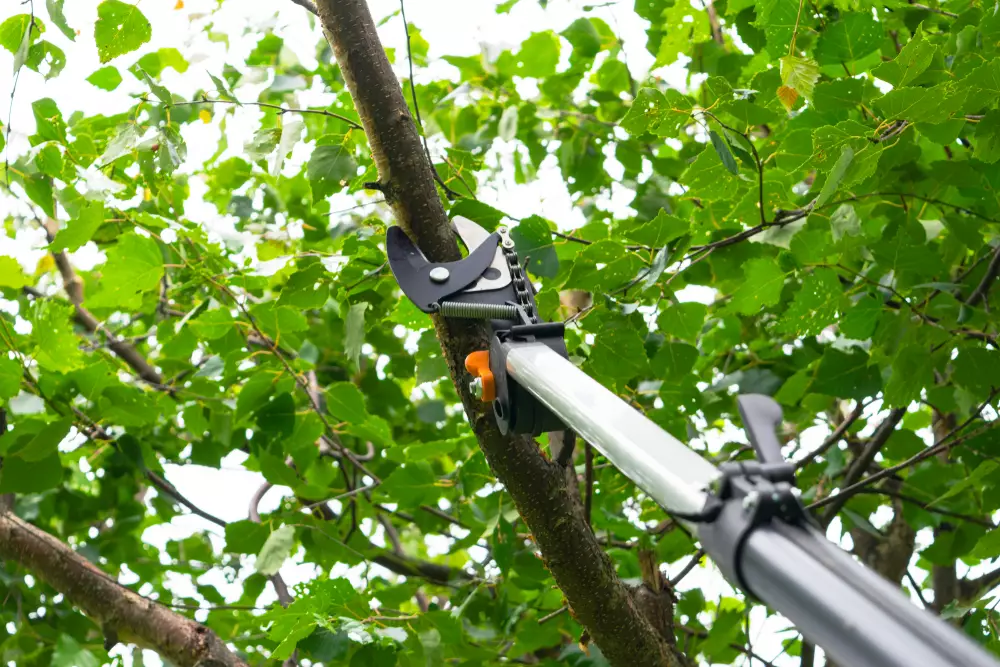Trees are not only aesthetically pleasing but also play a vital role in our ecosystem. To ensure the longevity and vitality of our beloved trees, proper care and maintenance are essential. Tree trimming, when done correctly, can significantly contribute to the overall health and well-being of trees. Keep reading to discover the importance of tree trimming, and take advantage of these valuable tips for trimming trees to promote their health and longevity.

The Purpose of Tree Trimming
Tree trimming serves multiple purposes, including enhancing the tree’s appearance, maintaining a safe environment, and promoting the tree’s overall health. Pruning dead, diseased, or damaged branches helps prevent the spread of infections and diseases while removing crowded branches promotes better airflow and sunlight penetration. Trimming also helps shape the tree’s structure, allowing it to grow in a balanced and aesthetically pleasing manner.
Identify the Right Time for Trimming
Timing is crucial when it comes to tree trimming. The ideal time for trimming depends on the tree species and its growth patterns. In general, it’s best to trim deciduous trees during their dormant season, typically in late winter or early spring, before new growth begins. On the other hand, evergreen trees can be trimmed during late winter or early spring as well, but it’s advisable to avoid trimming during hot and dry periods.
Follow Proper Pruning Techniques
When pruning trees, following proper techniques to minimize damage and promote healthy growth is essential. Start by removing any dead, diseased, or broken branches. Use clean, sharp pruning tools to make precise cuts just outside the branch collar without leaving stubs. Avoid pruning large branches that are more than one-third of the trunk’s diameter, as this can cause unnecessary stress to the tree. Instead, consult with a professional arborist for larger pruning jobs.
Promote Air Circulation and Sunlight
Proper air circulation and sunlight are crucial for a tree’s overall health. Trimming dense branches and thinning out the tree’s canopy helps improve airflow, reducing the risk of fungal infections and pest infestations. Additionally, selectively pruning branches that block sunlight can stimulate better photosynthesis and promote healthier growth.
Consider the Tree’s Structural Integrity
Maintaining the structural integrity of a tree is vital for its long-term health and safety. Regularly inspect the tree for any signs of weak or crossed branches, co-dominant stems, or branches with narrow angles of attachment. These structural issues can make the tree more susceptible to breakage during storms. By identifying and removing these potential hazards through proper trimming, you can protect the tree and prevent property damage or injury.
Seek Professional Assistance
While minor tree trimming tasks can be done by homeowners, it’s advisable to seek professional assistance for more extensive or complex pruning jobs. Certified arborists have the knowledge and expertise to assess the tree’s health, identify potential risks, and determine the best trimming approach. They also have the necessary equipment and safety measures to perform the task efficiently and safely.
Tree Trimming from Hagan & Sons
Tree trimming is a vital practice for maintaining the health and vitality of our trees. While it is possible for homeowners to trim their trees on their own, it’s always a good idea to leave tree cutting to professionals. At Hagan and Sons Tree Service, we can help you trim and maintain your trees in a way that not only makes your property look better but also protects it and makes it more eco-friendly. Contact us now to learn more about our tree services.
